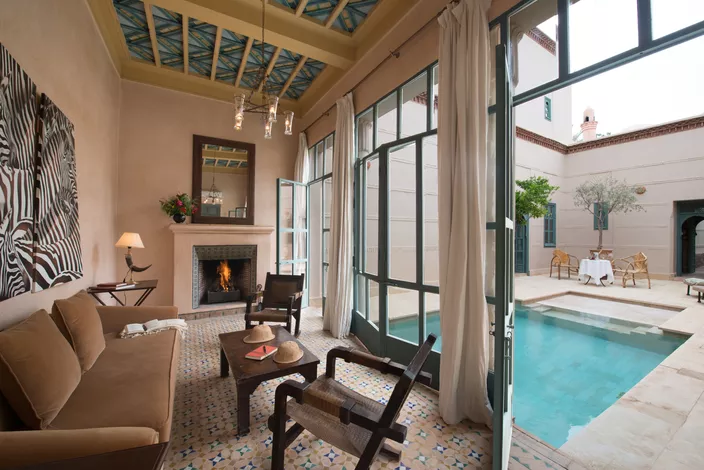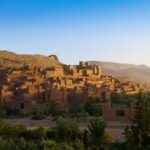
Between the blend of Berber traditions and modern influences, Arab-Andalusian styles, Moorish or colonial architecture, and the touch of Portuguese history, Moroccan monuments offer breathtaking beauty and rich stories to those who gaze upon them. They reflect Morocco itself: diverse and deeply mixed. Want to explore the 10 most beautiful historical monuments in Morocco? Let’s dive in!
Table of Contents
El Badi Palace, a glimpse of Marrakech’s golden age
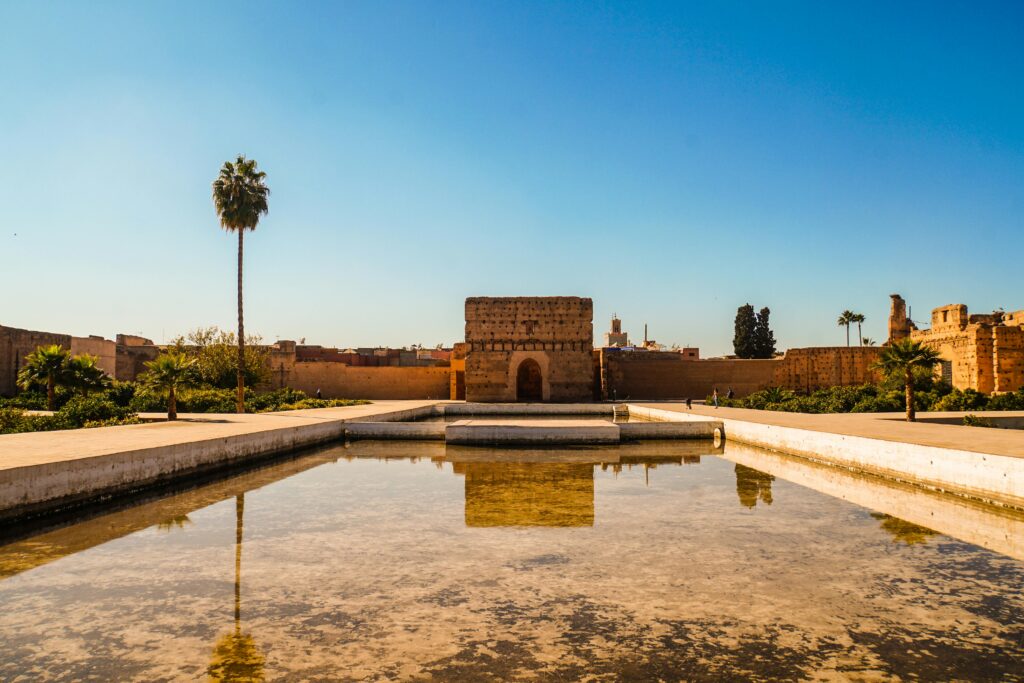
This once magnificent palace, built in the late 16th century by Saadian Sultan Ahmed al-Mansur Dhahbi, now stands in ruins, yet still captivates with its vast orange gardens and its UNESCO World Heritage status. Constructed from the finest materials, it once had a massive rectangular courtyard with an ablution basin, four grand pavilions, and over 300 rooms for royal ceremonies and grand events. El Badi, meaning “the incomparable,” still displays the grandeur of the past. Today, the palace hosts many festivals, including the Marrakech du Rire, created by Jamel Debbouze.
The majestic Kasbah of Chefchaouen

Built in the 15th century, the Kasbah of Chefchaouen is a fortress that birthed the development of the medina. Nestled in Outa El-Hamman square, beside the grand mosque, the Kasbah includes a garden and an ethnological museum with an impressive collection of northern Moroccan folk art and crafts.
Volubilis, the ancient city of Morocco
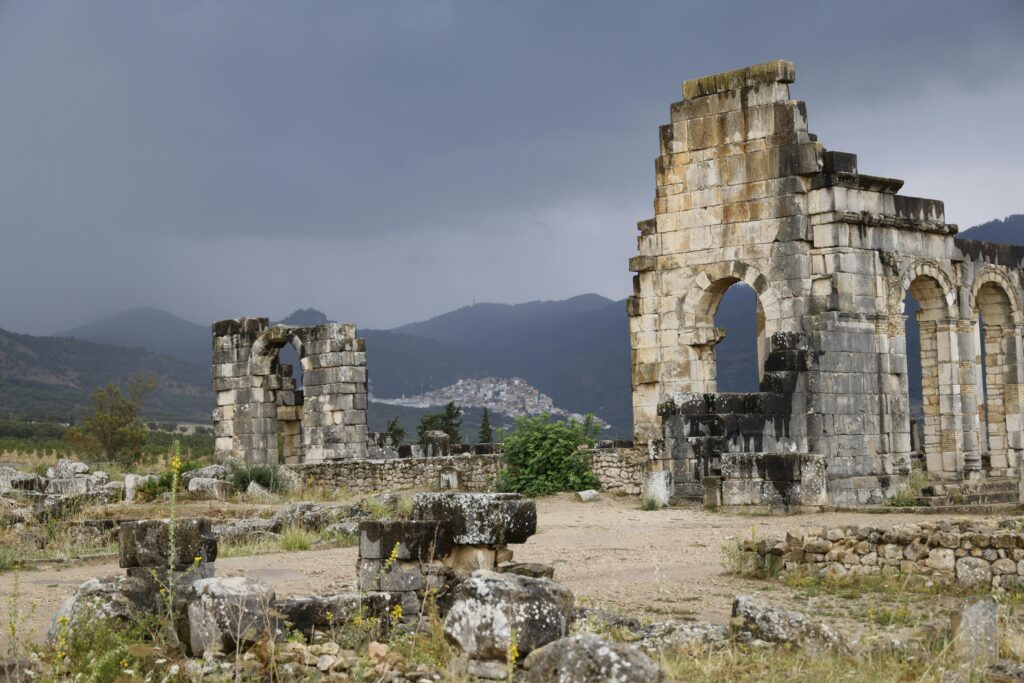
Volubilis, one of the largest Roman cities in Africa and now a UNESCO World Heritage Site, was once the capital of Mauretania, established in the 3rd century BC. As an essential outpost of the Roman Empire, its remnants still awe visitors today with grand structures like the Arch of Caracalla, the Tingis Gate, and intricate mosaics, all telling the story of its Roman past.
The Koutoubia Mosque, renowned worldwide

Though its architecture is somewhat understated, what truly draws attention is the mosque’s stunning surroundings. The minaret, almost 69 meters high (77 with the spire), is a masterpiece of design, richly decorated. Surrounding the mosque are beautiful gardens, green walkways, and charming fountains.
The spectacular Bahia Palace
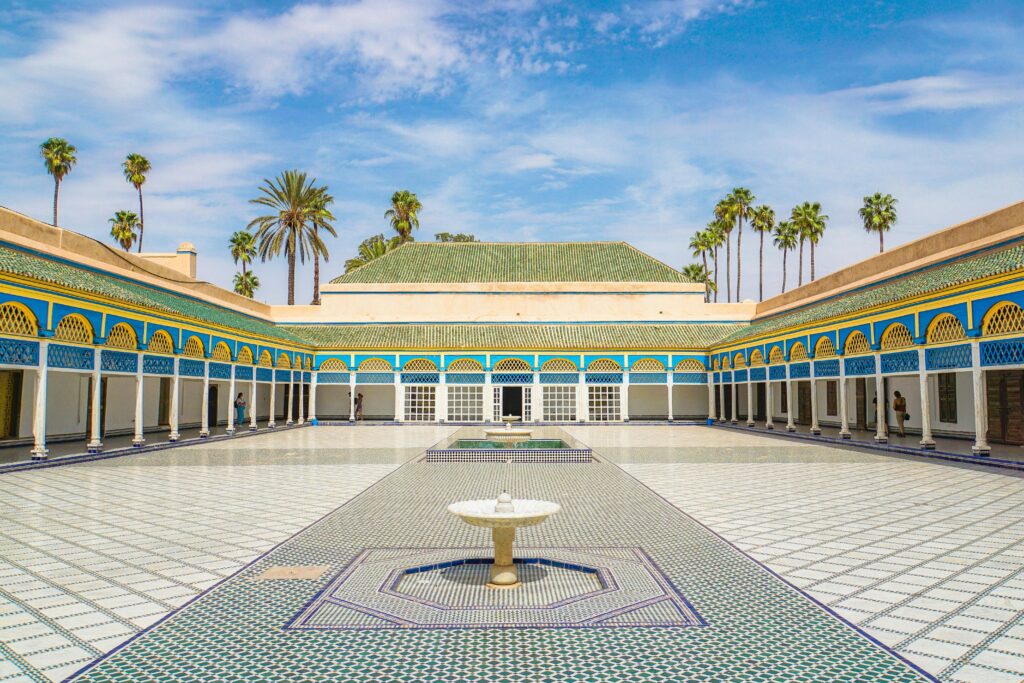
The Grand Vizier Sidi Moussa built this palace in the 19th century with the sole intention of making it the most extraordinary palace ever. After more than a decade of construction, the result is an 8-hectare marvel with 150 rooms. The Bahia Palace stands as one of the most magnificent structures to visit in Marrakech and beyond.
The solemn Mohammed V Mausoleum
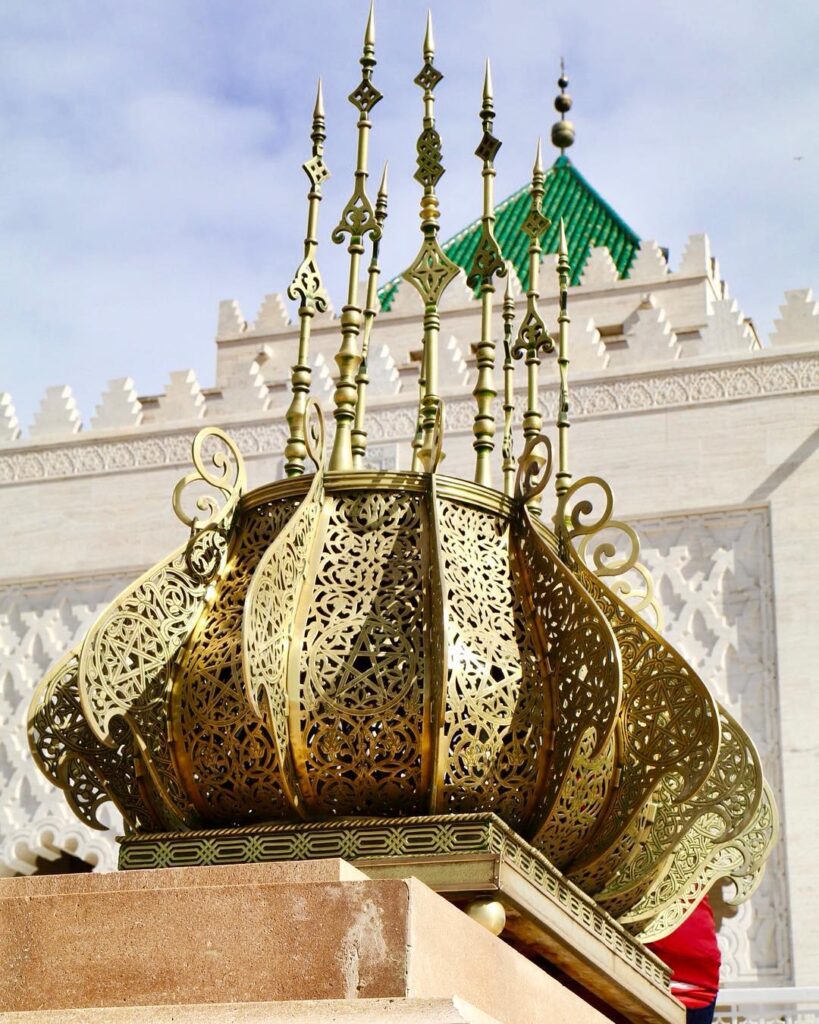
In the heart of Morocco’s capital, Rabat, lies the mausoleum dedicated to the beloved monarch, Mohammed V. Visitors can witness intricate examples of traditional Moroccan art, from white marble and zellige tiles to detailed plaster and wood carvings, all while paying tribute to the king.
The Kasbah of the Oudayas, a city within the city

Also in Rabat is the Kasbah of the Oudayas, built in the 12th century as a fortified military camp. Now a UNESCO World Heritage Site, it’s home to one of the earliest palaces of the Alaouite dynasty, which continues to rule today. The Andalusian influence is evident in the lime-coated walls, blue hues, cobbled streets, and intricate doors. This peaceful enclave is a serene refuge for its residents and visitors alike.
The Saadian Tombs, a royal necropolis
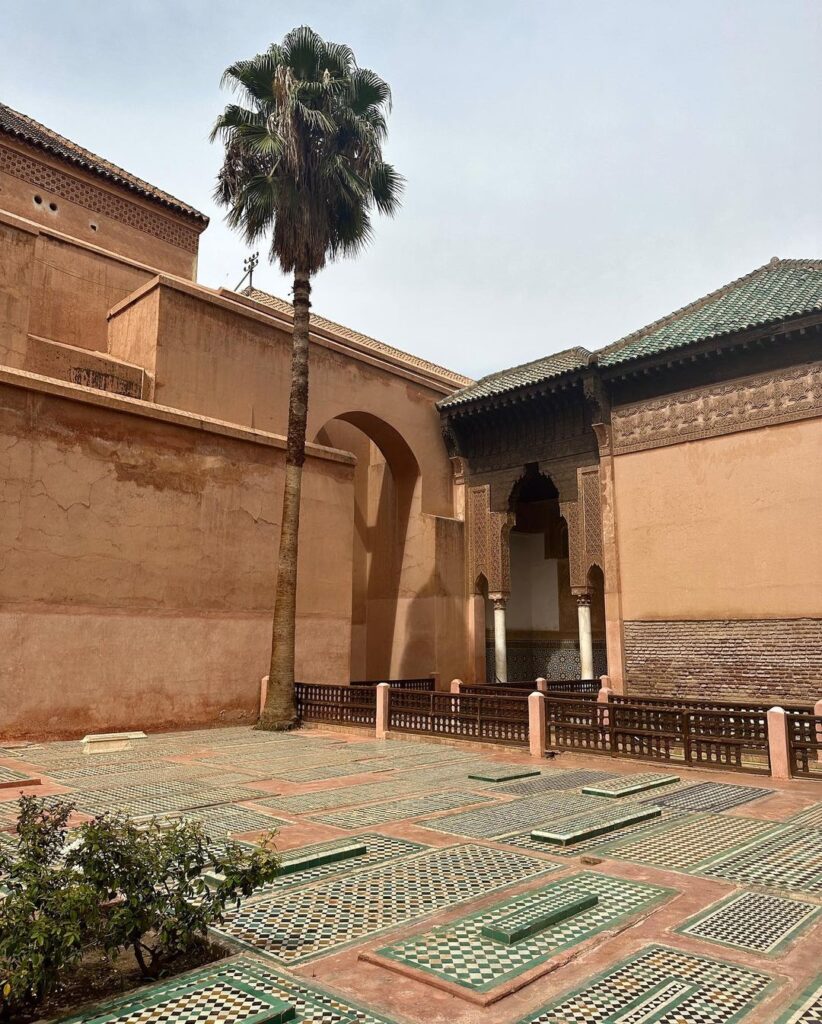
Hidden until 1917, the Saadian Tombs in Marrakech house the remains of Sultan Ahmad-al-Mansur and his family. The main mausoleum is a masterpiece, particularly the room with twelve columns, where the sultan’s children rest. The surrounding garden holds more than 100 beautifully decorated tombs of servants and soldiers from the Saadian dynasty.
The Hassan II Mosque, Casablanca’s crown jewel
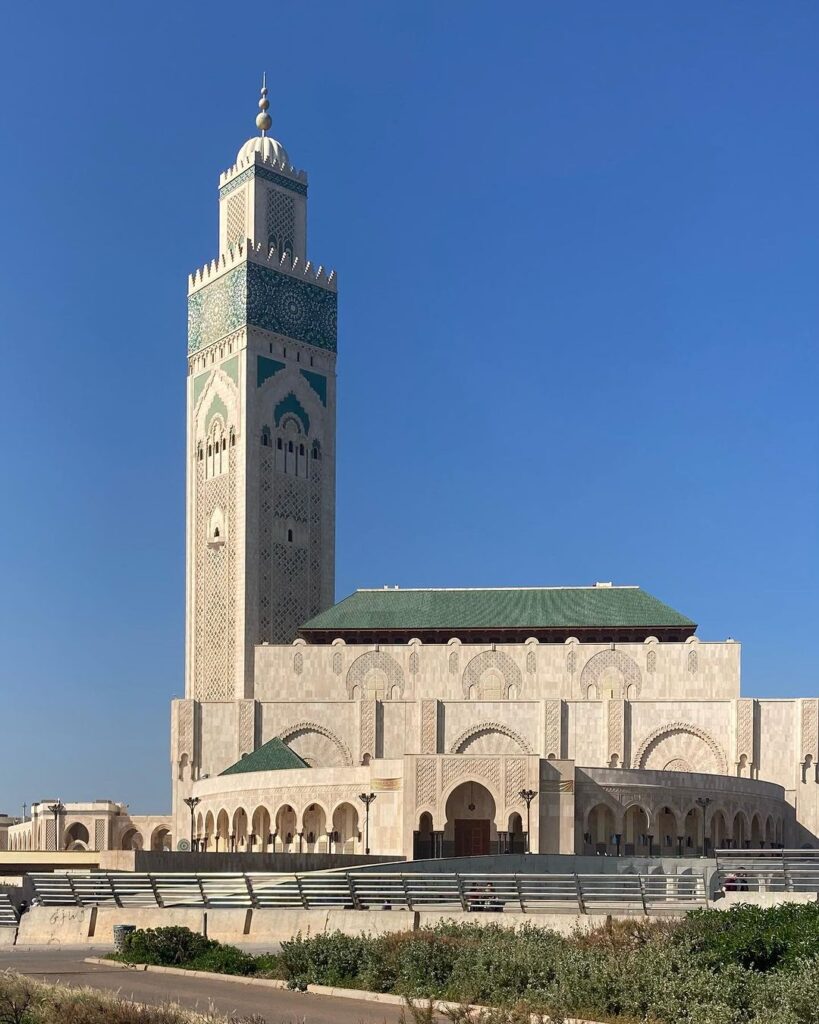
The Hassan II Mosque, the sixth largest mosque in the world, boasts the second-tallest minaret, rising 200 meters above Casablanca’s coastline. Built partially over the sea, this grand mosque includes a prayer hall, ablution rooms, baths, a Koranic school, a library, and a museum, blending religious and cultural significance.
The Al-Attarine Madrasa, an architectural treasure
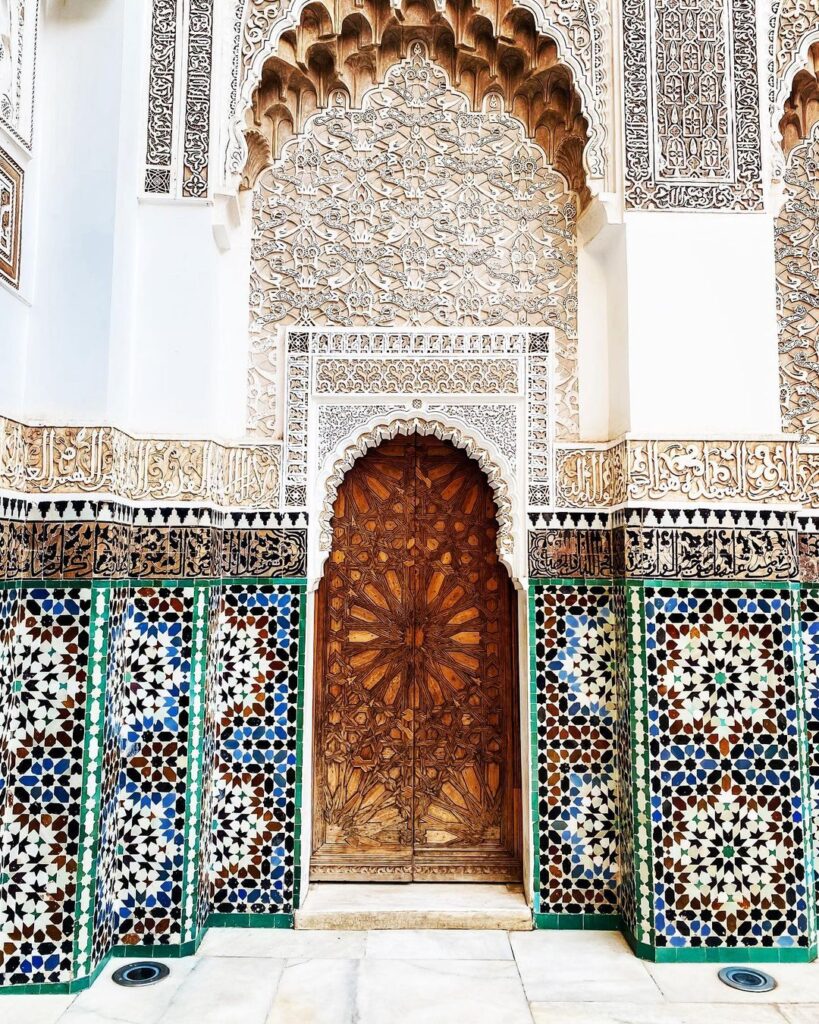
Constructed in the 14th century, this was one of the key schools for Koranic study. Located in the heart of Fez’s spice merchant district, students once lived here during their studies. Though Fez has multiple madrasas, Al-Attarine stands out for its intricate geometric designs and detailed ornamentation, a true feast for the eyes.
Bou Inania Madrasa in Fez, one of a Kind in Morocco

Madarsa Bou Inania, built by the Merinid Sultan Bou Inan between 1351 and 1357, is the most architecturally refined of Fez’s theological colleges. Its grand brass entrance doors lead to an exquisite courtyard adorned with intricate zellige tilework, carved plaster, and stunning cedar lattice screens. The smaller adjoining courtyards once served as classrooms, with student quarters located upstairs. Unique among madrasas, Bou Inania also features a full mosque, which closes to visitors during prayer times. The mosque’s mihrab, with onyx columns, mirrors the style of the Great Mosque of Córdoba, and its striking green-tiled minaret is visible when entering the medina through Bab Bou Jeloud.
The Sqala of the Kasbah, with a beautiful collection of Spanish Cannons
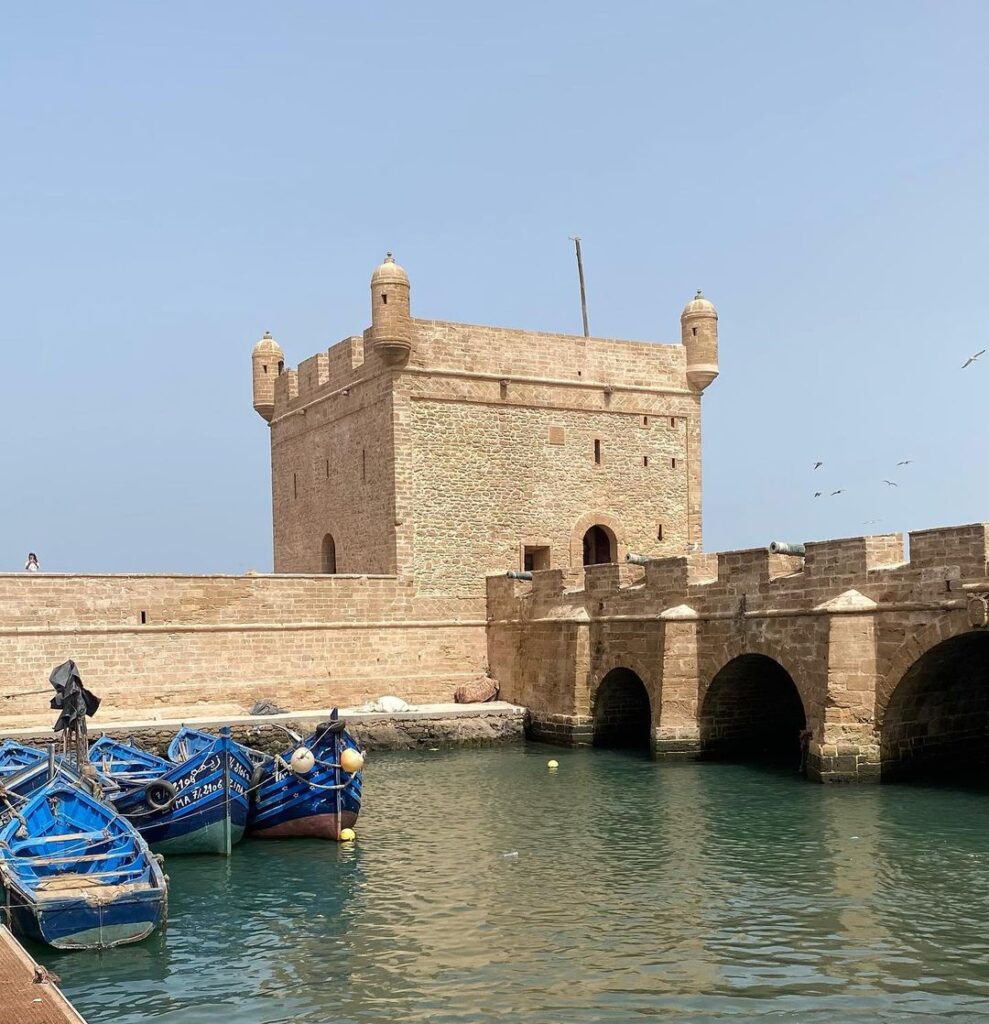
The Sqala of the Kasbah in Essaouira was built at the northwestern tip of the Medina in 1765 to defend the city from attacks from the sea. It consists of a two-level platform with a series of rooms that were intended for storing ammunition and weapons. The marquetry shops are lined up at the foot of the sqala on a small alley. This building is equipped with a beautiful collection of Spanish cannons dating from the 16th century.
Cap Spartel Lighthouse, marking the meeting point of the Mediterranean Sea and the Atlantic Ocean
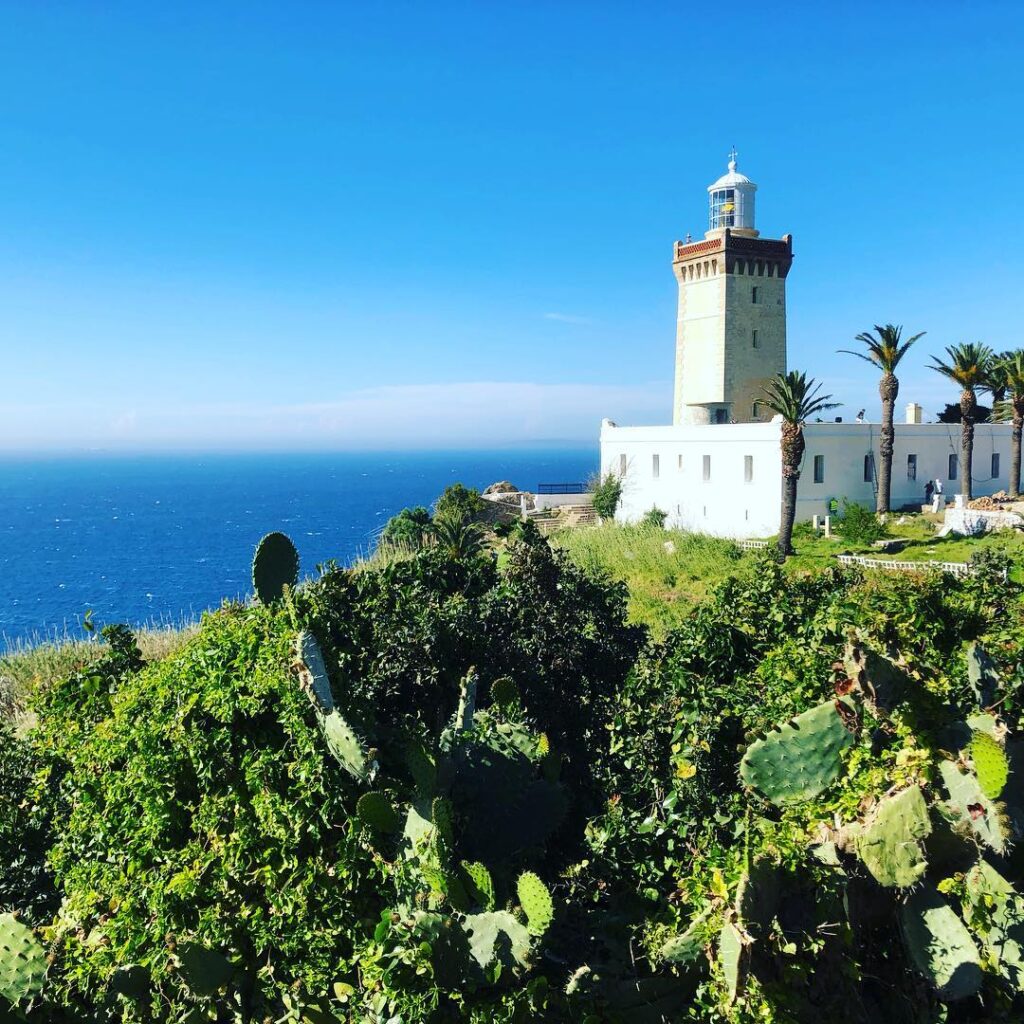
This lighthouse, located above the Caves of Hercules near the northernmost point of Morocco, stands around 15 km west of the Port of Tangier, marking the meeting point of the Mediterranean Sea and the Atlantic Ocean. Built in 1864 by Sultan Mohammed IV, it initially came under the control of European powers through an international agreement in 1865 but returned to Moroccan authority after the country gained independence. The lighthouse features a 24-meter (79 ft) square masonry tower with a castellated gallery, lantern, and a 1st-order Fresnel lens. A two-story keeper’s house is also attached to the structure.
Kasbah Taourirt, an outstanding building with a rich history
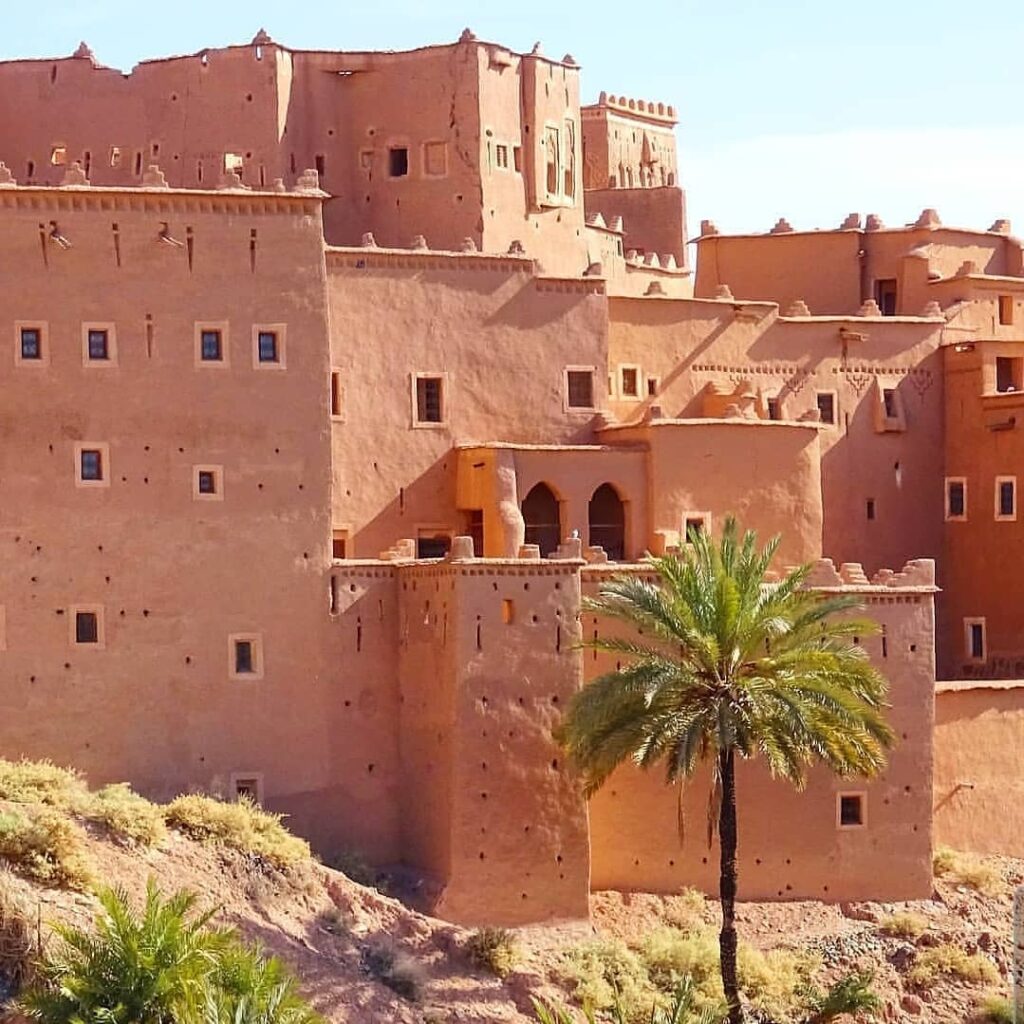
Located in the heart of Ouarzazate, the Kasbah has seen significant restoration, with most of it restored in the 1980s, and more recent work completed on the southern side. The Kasbah’s exterior walls are decorated with geometric Amazigh designs, but the true beauty lies inside, where intricately carved and painted cedar ceilings, wall paintings, and zellige tiles showcase the rich decor El Glaoui introduced. While Taourirt may not stand out as much as other kasbahs on the 1000 Kasbahs route, the portion open to visitors only reveals a small glimpse of its full grandeur.
Medersa Ben Youssef, a historic Islamic school
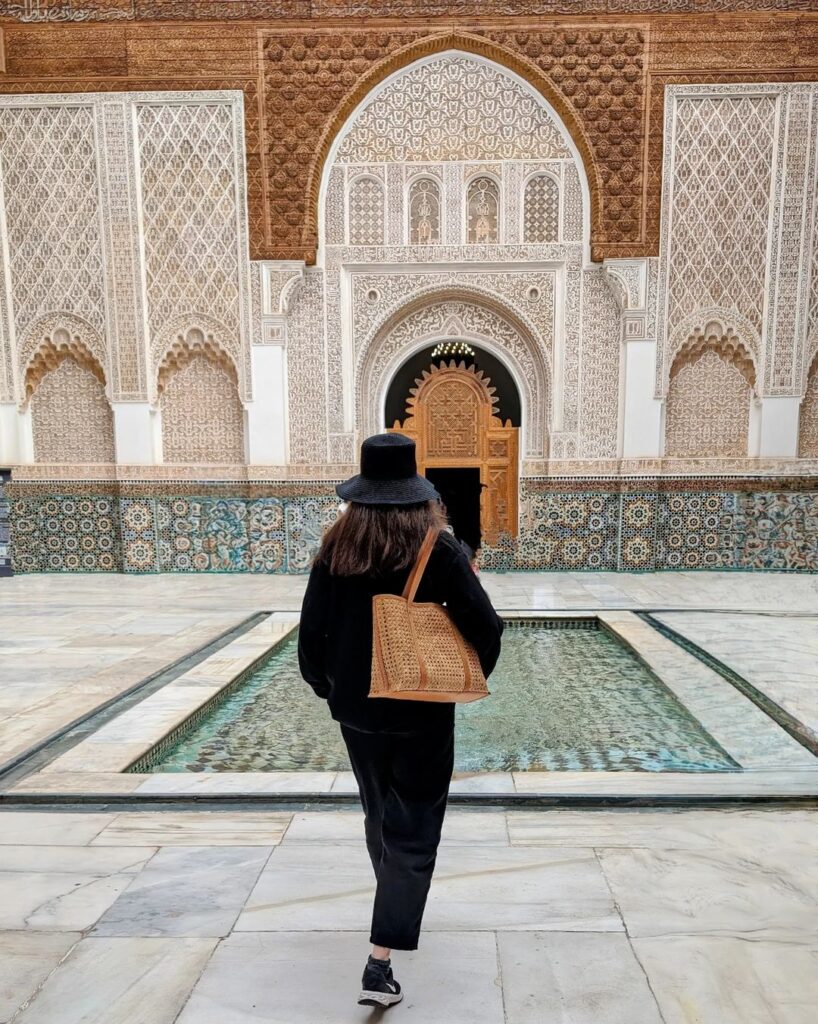
Constructed by Sultan Abdullah Al-Ghaleb Assaadi between 1564 and 1565, this madrasa in Marrakech became a center of learning for over four centuries, drawing students and scholars from various fields, especially in religious teachings.
Upon entering, the medrasa’s stunning design immediately captivates. The walls are decorated with detailed zellige tiles, featuring intricate geometric and floral patterns, showing off the fine craftsmanship of the era. The doors and ceilings, made from carved cedar wood, display incredible attention to detail. In the heart of the building, the courtyard, calm and serene, stands as a breathtaking piece of art.

